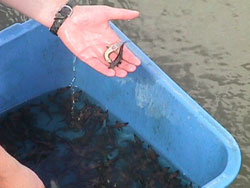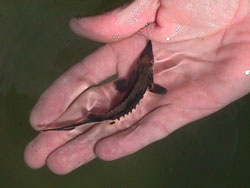Collection & Rearing Process
Collecting Eggs
Sturgeon are captured in nets at spawning sites.
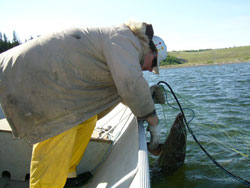
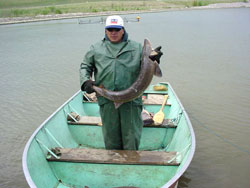
Sturgeon are checked for ripeness:
- Males are ready to spawn when light pressure on abdomen expresses sperm.
- Females are preparing to spawn when abdomen is plump and vent is red and swollen
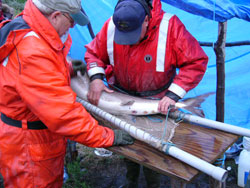
Females and males are held in net pens until they are ready to spawn.
If necessary a hormone is injected to trigger ovulation.
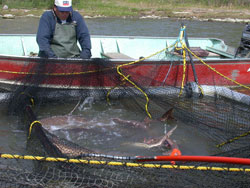
Sperm is collected using a syringe and is stored on ice until needed.
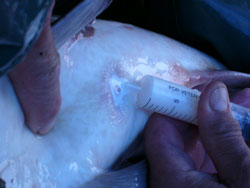
Eggs are expressed every hour or so as they ripen.
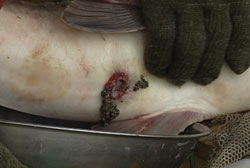
Sperm is added and mixed to fertilize the eggs.
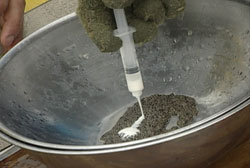
A solution of fine clay in water is added to prevent the eggs from sticking to each other and smothering.
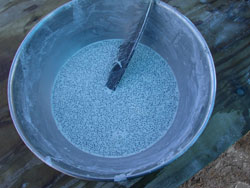
The fertilized eggs are rinsed in clean water and transported in coolers to the hatchery. At the hatchery they are placed in incubation jars with a constant flow of fresh water.
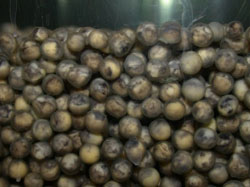
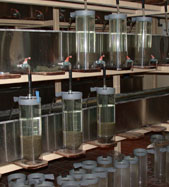
Hatching Eggs
- Depending on water temperature eggs hatch to larvae (sac fry) in about a week.
- The fry continue to develop over the next 2–3 weeks while they absorb their yolk sacs.
- Once the yolk sac is absorbed fry must begin eating and, as they grow, are fed larger and larger food items such as brine shrimp and blood worms.

Rearing Fingerlings
- Sturgeon are not an easy fish to rear.
- They require frequent feeding (sometimes hourly) so two shifts of staff must be hired at the hatchery.
- Sturgeon are fussy about their food and must be watched carefully to ensure they are eating, especially when switching to larger food types as they grow.
- If there is not enough room in the hatchery some sturgeon are stocked in the Saskatchewan River as fry.
- The remainder continue to be reared until fall and may reach 10 cm in size depending on water temperature in the hatchery.
- In fall the fingerlings are transported in oxygenated tanks back to the Saskatchewan River and stocked.
